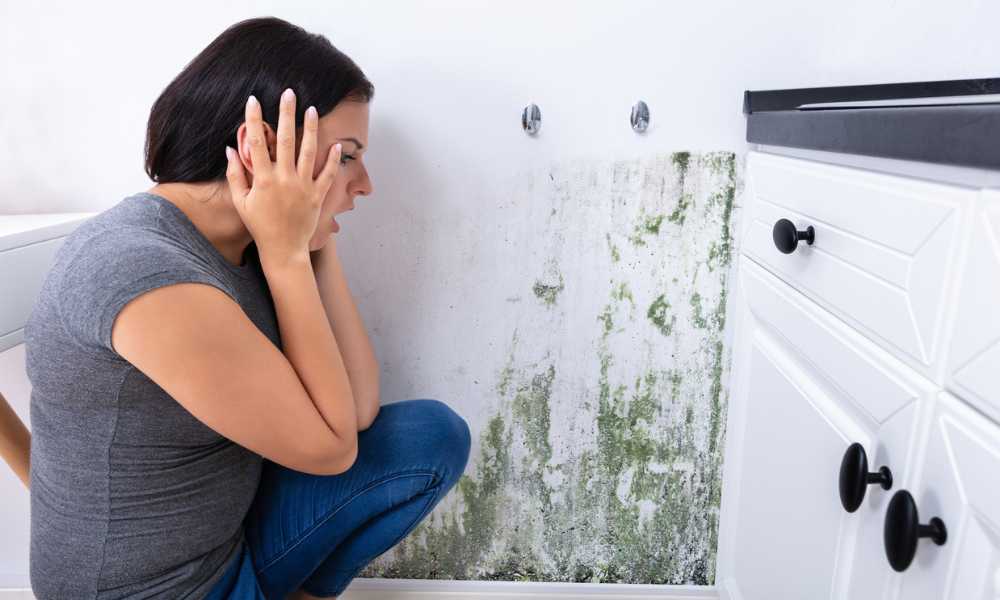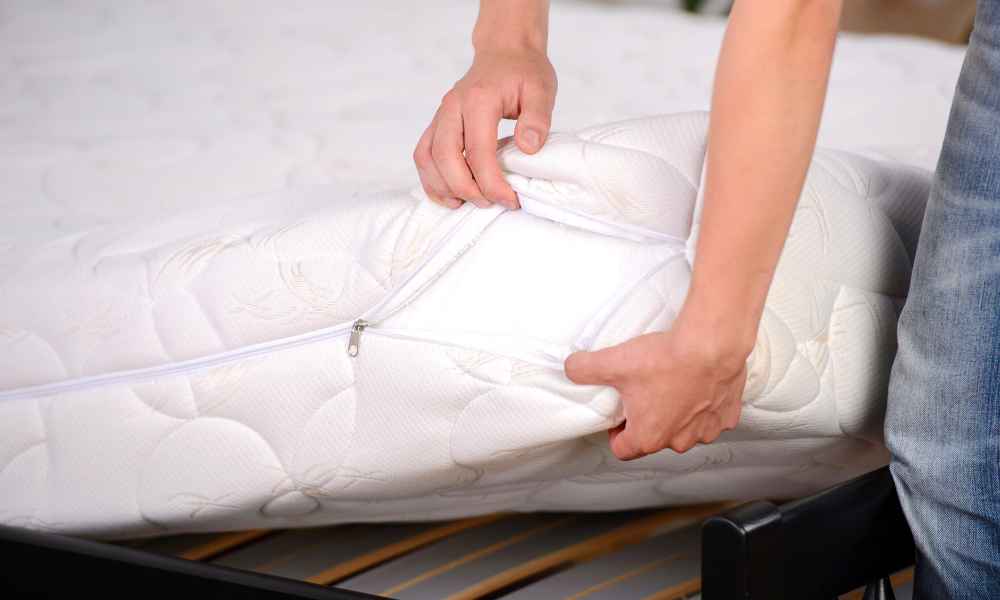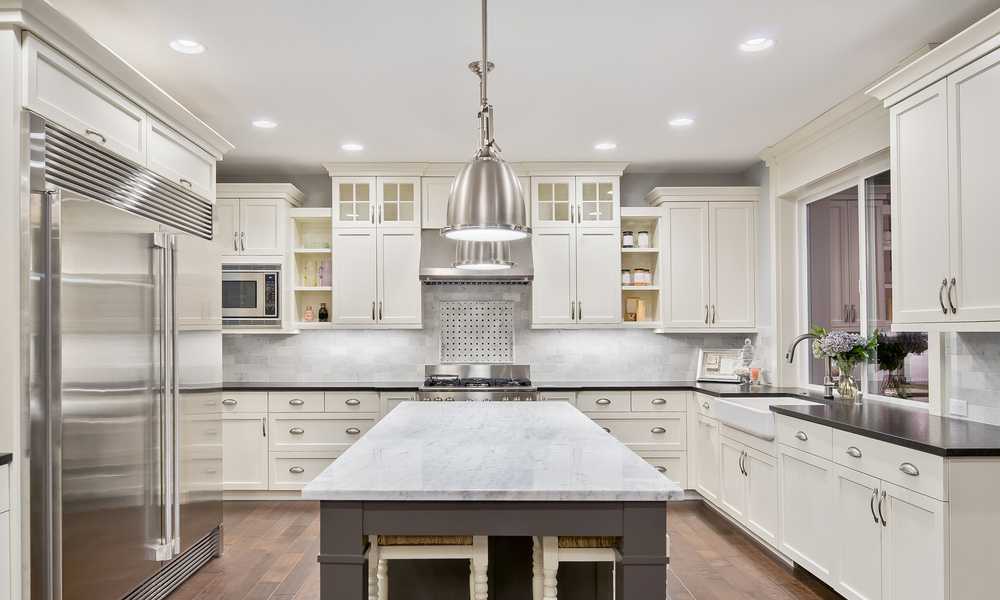Having rid of mold under kitchen cabinets is a common issue that can become a major problem if left unchecked. It is not only unsightly but can also cause health hazards for the occupants of the home. Thankfully, There are some simple steps you can take to get rid of this pesky problem once and for all. In this article, we will discuss how to safely and effectively remove mold from under your kitchen cabinets without having to call in an expensive professional.
Causes Of Mold In Kitchen Cabinets

- It can form on any surface in a kitchen cabinet that is wet, damp, or warm, including the shelves and the doors.
- The moisture from foods and other materials that accumulate on the cabinet surfaces attracts growth.
- Condensation from the air condenser or humidifier also contributes to growth.
- Dirty dishes and scraps of food left on the cabinet surfaces provide a perfect environment to grow unchecked.
- This can also be introduced into a kitchen cabinet by Pets or people who are sick with respiratory infections.
- In extreme cases, When its growth becomes advanced, It can release harmful toxins that can cause serious health problems, including pneumonia and even death.
How to recognize mold under the sink

Mold can be a serious problem in any home, But it’s especially risky under the kitchen cabinets. Here are some easy ways to identify and get rid of molds under your sinks:
- Check for black or brown patches on the wall or floor near your sink. This is probably where it growth occurred.
- Check for strange smells coming from the area. If you notice strong smells like musty or dampness, This is an indicator that may be present.
- Look for wet spots on the floor or walls near your sink this could mean water has been leaking under the cabinets and onto the surface below.
- Use a flashlight to inspect behind and around your sink for fuzzy white patches or spongy material this is likely molds growing on drywall, pipes, Or other surfaces beneath your sink.
Mold Under The Sink: How To Get Rid Of It
Mold can be a real issue in any home, But it can be particularly troublesome under kitchen cabinets. Here are some tips on how to get rid of molds under your cabinets:
Start At The Source
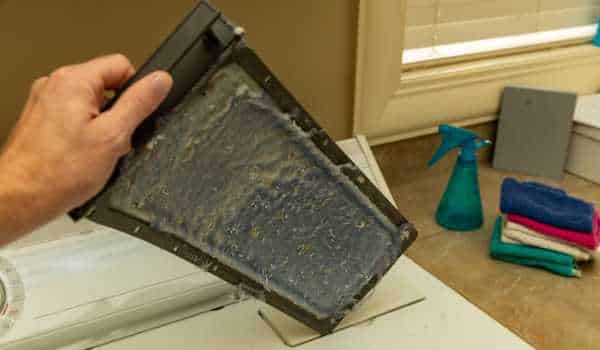
household molds under kitchen cabinets
The easiest way to eliminate household mold is by starting at the source. This means taking action against the problem before it causes any damage. Here are some tips:
- Fix any leaks in your plumbing system. This will allow moisture to stay inside the building, instead of coming in contact with molds spores.
- Clean and dry your surfaces regularly. molds love moist areas, So keeping your countertops and cabinetry clean will help control their growth.
- Check for drafts and install storm windows if necessary. A draft can bring fresh air into a building, which can help discourage molds growth.
- Remove any furniture that might be contributing to moisture accumulation, like water dispensers or humidifiers. These items can create an ideal environment for molds growth.
Choose Your Weapons

If you are plagued by mold under your kitchen cabinet, It is important to choose the right weapons to fight off the spores. There are a number of products on the market that claim to be effective at getting rid of mold, But it is important to do your research first before choosing one.
Some of the most common methods used to get rid of molds include airing out the area, using a dehumidifier, And using a bleach solution. It is important to note that not all of these methods will work for everyone, So it is recommended that you try multiple options until you find one that works best for you.
It is also important to be careful when cleaning your cabinets as over-cleaning can actually make the problem worse.
Suit Up And Attack
Mold can be a serious health hazard, especially in areas where moisture and humidity are high. If you’re concerned about molds under your kitchen cabinets, There are several things you can do to get rid of them. First, You should use a mild bleach solution to clean the area. Second, You can use an effective molds removal product to get rid of the molds.
Use a Mold Removal Kit

If you notice mold growing under your kitchen cabinet, There is a good chance that you can remove it using a mold removal kit. Kits typically include a solvent and a sponge. wet the sponge and drop it into the solvent. Wait until the molds has dissolved, Then use the sponge to clean up any residue. Be sure to wear gloves and eye protection when cleaning up the area.
Use Bleach and Water

One common solution is to use bleach and water, but be careful not to let the mixture get too strong or it could damage your cabinets. You can also try using a vacuum cleaner with a hose attachment to remove it, But be sure to cover any electrical outlets or switches in the area with something so that you don’t shock yourself or your pets.
Use an Air Purifier
An air purifier may be a good solution for you. While some people shy away from using them because of their perceived high price tags, An air purifier can really help to get rid of any lingering spores and bacteria. And if you live in a particularly humid or damp environment, An air purifier maybe even more important.
Use a Dehumidifier
It might be time to consider using a dehumidifier. Molds love damp environments, So having a dehumidifier in your kitchen can help get rid of it. Here are 3 reasons why you should use a dehumidifier in your kitchen:
- Mold thrives in moist environments, So using a dehumidifier in your kitchen can help get rid of it.
- A dehumidifier can also help reduce the amount of moisture that’s available for molds to grow.
- Running a dehumidifier will also have a negative effect on the air quality in your home, So make sure to monitor the machine’s operation closely.
Use Mold Removal Products
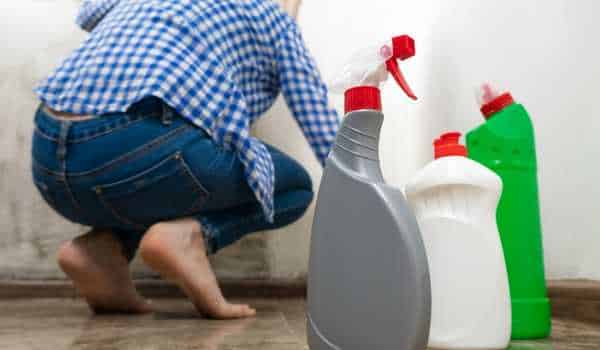
Experiencing mold growth under your kitchen cabinets, It is important to take action. There are a number of products that can help you get rid of the molds and prevent them from coming back. Some of the most common molds removal products include bleach, water, And a vacuum cleaner. It is important to use the correct product for the type of molds you are dealing with. For example, bleach is effective against many types of molds, But it can also damage surfaces if used incorrectly.
Get Professional Help

Noticing mold growing under your kitchen cabinets, don’t try to fix the problem yourself. Contact a professional to get the molds removed and prevent it from returning. Here are some tips to help you find and hire a qualified contractor:
- Start by looking online for reviews of contractors in your area. Check out Angie’s List or Yelp for recommendations.
- Ask family and friends if they know of any good contractors. They may have worked with someone in the past who was able to do a great job.
- Inspect the areas around your kitchen cabinets that seem to be prone to molds growth. Look for signs of water damage or peeling wallpaper. If you see anything suspicious, contact a professional right away.
Steps For Clearing Mold In Kitchen Cabinets
One of the most common areas for mold to grow is in the cabinets. It forms from water getting trapped under the cabinet and condensation building up over time. This can cause a musty smell, As well as health problems if you are sensitive to molds. To get rid of molds under your kitchen cabinets, There are a few things you can do:
Leaks

Notice water or mold growing in your kitchen cabinet, It’s important to take action right away. Fixing the leak and preventing mold growth can be a daunting task, But with a bit of preparation and know-how, It’s definitely doable.
Check the faucet – If the leak is coming from a plumbing fixture like a faucet, check to see if there’s any debris or sediment blocking the flow of water. Clean out any obstruction with a plunger or pipe cleaner. If the faucet is beyond repair, replace it with a new model that has tighter seals for better water flow control.
High Humidity Levels
High humidity levels can be a problem in any environment, But they’re particularly troublesome in kitchens, Where moisture collects easily. This grow rapidly in high humidity, And it’s not just a cosmetic issue: high levels of molds can make your kitchen unhealthy to breathe in and dangerous to work in. Here are some tips for getting rid of molds:
- Keep the area around the cabinets well-ventilated. Open all the cabinet doors and windows as much as possible to help air circulation.
- Wash dishes and surfaces regularly in hot water with soap. Scrub away any dried food or grease residue.
- Keep storage areas clear of clutter and excess items. This will reduce the amount of moisture that gathers on shelves and counters.
Garbage Disposal
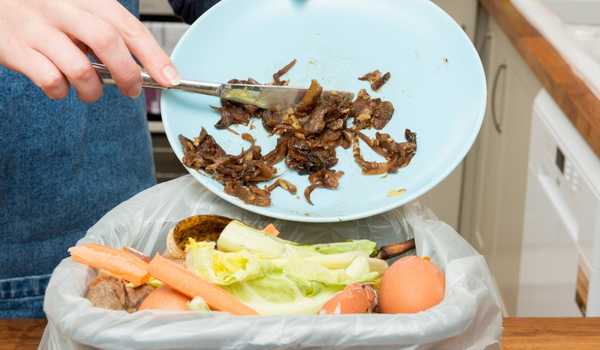
Garbage disposal units can help to get rid of mold and other bacteria that may be growing in the area around your kitchen cabinets. By doing this also you will help to keep your kitchen clean and free from any dangerous contaminants. If you are experiencing any problems with mold or bacteria under your kitchen cabinets, It is important to take action right away. By calling a professional, such as a plumber, You can ensure that the problem is properly fixed and does not recur.
Wood
Wood cabinets in your kitchen, It’s important to get rid of any mold that may be growing underneath them. It causes serious health problems if it is inhaled or ingested, So it’s important to take action right away if you notice any signs of molds. There are a few steps you can take to get rid of molds under your kitchen cabinets:
- Try using a bleach solution to clean the area around the cabinets. Make sure to wear gloves and eye protection when working with bleach, As it can be harmful if it contacts your eyes or skin. Be sure to rinse the area thoroughly after cleaning it with bleach.
- If using bleach isn’t an option, however try using a vacuum cleaner with a brush attachment to remove any mold spores that may be present. Be sure to vacuum up any water that has been pooled beneath the cabinets after cleaning.
Drywall
The kitchen cabinet is covered in drywall, It’s time to get rid of the mold. Drywall is a porous material and is perfect for harboring mold and bacteria. Not only is this unsightly, But it can also cause health problems if left untreated. Here are a couple of steps to cleaning up the molds under your kitchen cabinets:
- Remove the drywall panels using a crowbar or a chisel. If the panels are glued together, pry them apart with a knife before removing them. Be sure to wear gloves and protective gear to avoid breathing in the dust created by the demolition process.
- Vacuum up all of the debris created by demolition, including screws, nails, and other small parts. Clean any surfaces that may have been exposed to moisture or dust during construction.
Grout
Grout is a popular way to get rid of mold under kitchen cabinets. While it is an effective solution, there are a few things to keep in mind when using grout. First, make sure the grout is compatible with the cabinet material. Second, be sure to clean the area well before applying grout. And finally, Be patient grouting can take a few days to several weeks to fully cure.
Cardboard
Cardboard boxes or packing material lying around in your basement, It might be time to get rid of them and get your mold under kitchen cabinets under control. This can act as an excellent medium for mold to grow and reproduce, So it’s important to get rid of it as soon as possible.
There are a few ways to do this. One is to use a broom and dustpan to sweep the cardboard up and throw it away. Another is to pour boiling water onto the cardboard and let it sit for a few minutes before throwing it away. And finally, you can put the cardboard in a bag and take it outside.
These steps will help reduce the amount of mold that grows under your kitchen cabinets, Which will ultimately improve your health and the cleanliness of your home.
Fabric

One is to use fabric to cover the area. This will help reduce moisture and keep the area cool. You can buy pre-made covers or make your own using an old piece of sheet cloth or curtain fabric. You can also cover the edges of the cabinet with a strip of fabric to keep moisture and dust from collecting on the surface.
Can mold under the sink make you sick?
Mold can be a serious health hazard in any environment, But it’s particularly dangerous if it grows underneath kitchen cabinets. Not only can mold release toxic spores that can cause respiratory problems, But it may also spread harmful bacteria and fungus. If you’re concerned about the presence of mold under your sink, There are several steps you can take to get rid of it safely and quickly.
How to identify and eliminate mold under kitchen cabinets: A checklist
Noticed mold growing under your kitchen cabinets, There are some steps you can take to identify and eliminate it. This includes a checklist of procedures that can help minimize the risk of mold growth in the first place and help get rid of it once it is detected.
The first step is to determine if there is any water damage or moisture accumulation in the area where the mold is growing. Mold loves moist environments, so if there is anything leading to excessive moisture (like water leaks or damp corners), Then its growth will likely occur. If you see signs of water damage or moisture accumulation, start by cleaning up the area and covering any exposed surfaces with plastic sheeting or duct tape until repairs can be made.
If water damage or moisture accumulation isn’t an issue, Then you can move on to checking for pests.
How well did you remove the mold? And what lessons can you learn?
You’ve probably experienced the unwelcome guest of mold at some point. Whether it’s on a piece of furniture, or in your own home, It is a real nuisance. But before you panic and call a professional, There are a few things you can do to get rid of the molds yourself.
First, make sure all sources of moisture are eliminated. However this means stopping leaks, cleaning up spills quickly, And avoiding humid areas. If the molds are on something like drywall or insulation, It will be impossible to remove without causing extensive damage.
Next, use an effective mold removal product. It’s important to note that not all products are created equal some will simply cover up the problem while others will actually eliminate it. Always read the instructions carefully before using any product to avoid any potential injuries.
Tips for cleaning up after getting rid of mold under kitchen cabinets
Mold growing in your kitchen cabinets, so it’s important to take action to clean up the mess. Here are a few tips for cleaning up after getting rid of mold under kitchen cabinet:
- Remove all the debris and any visible mold with a vacuum cleaner. If the area is large, use a wet/dry vac to help remove all the water and debris.
- Use an anti-mold solution to clean any areas that haven’t been cleaned by a vacuum cleaner. Follow the instructions on the bottle or container.
- Sanitize all surfaces that were touched by mold using a bleach solution or hot water and dish soap. The surfaces dry before storing items back in the cabinet.
- Cover any open areas with plastic sheeting and tape until the area can be fully cleaned and dried out.
The Final Thought
Mold growing or appearing in your kitchen cabinets, It’s time to get rid of it. There are several ways to do this, depending on the severity of the problem. You can use a bleach solution to kill the molds and their spores, use a vacuum cleaner with a special attachment to remove all the molds, Or use a professional cleaning company that specializes in removing molds. Whatever method you choose, make sure to read and follow the instructions carefully.
